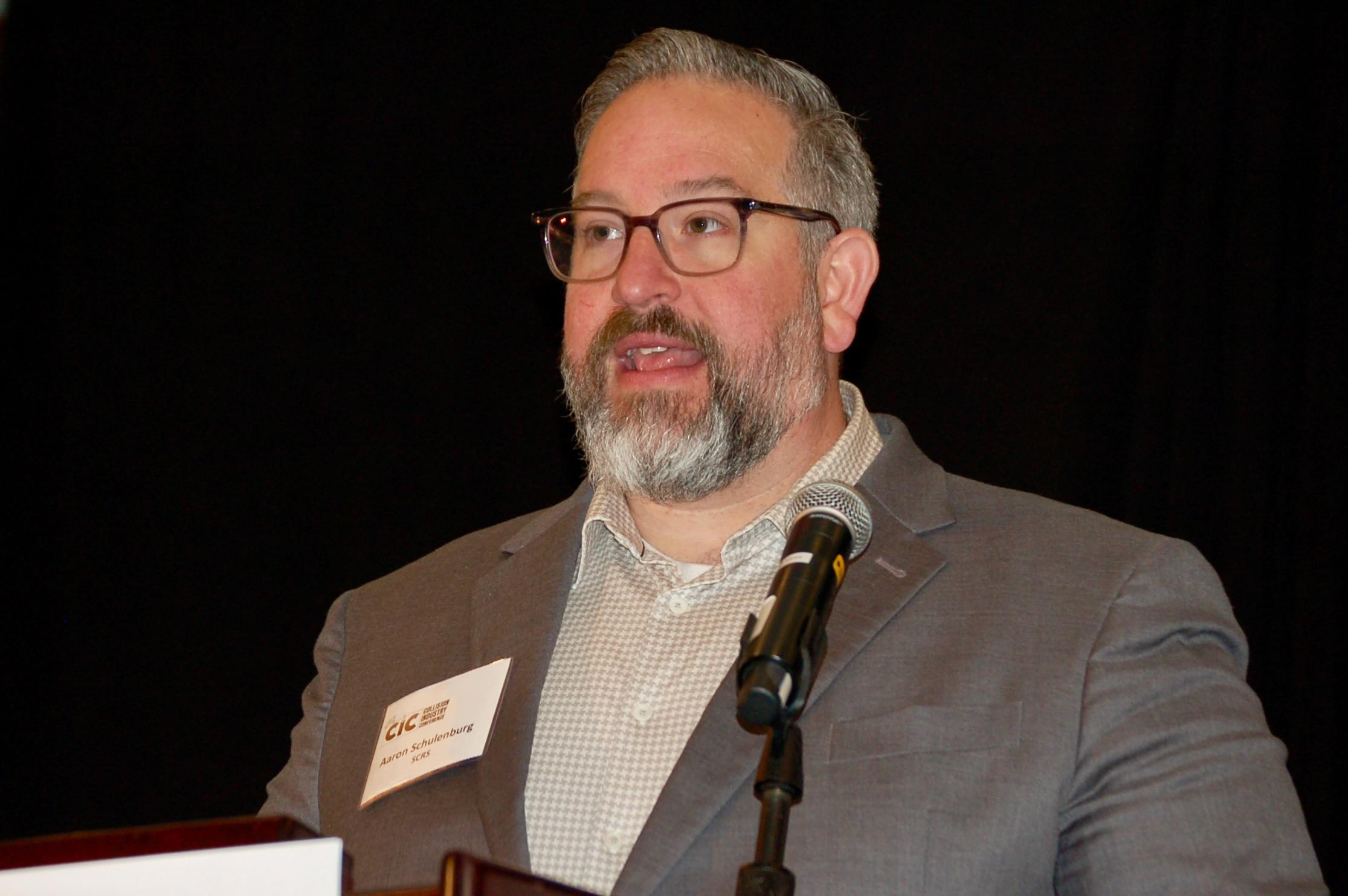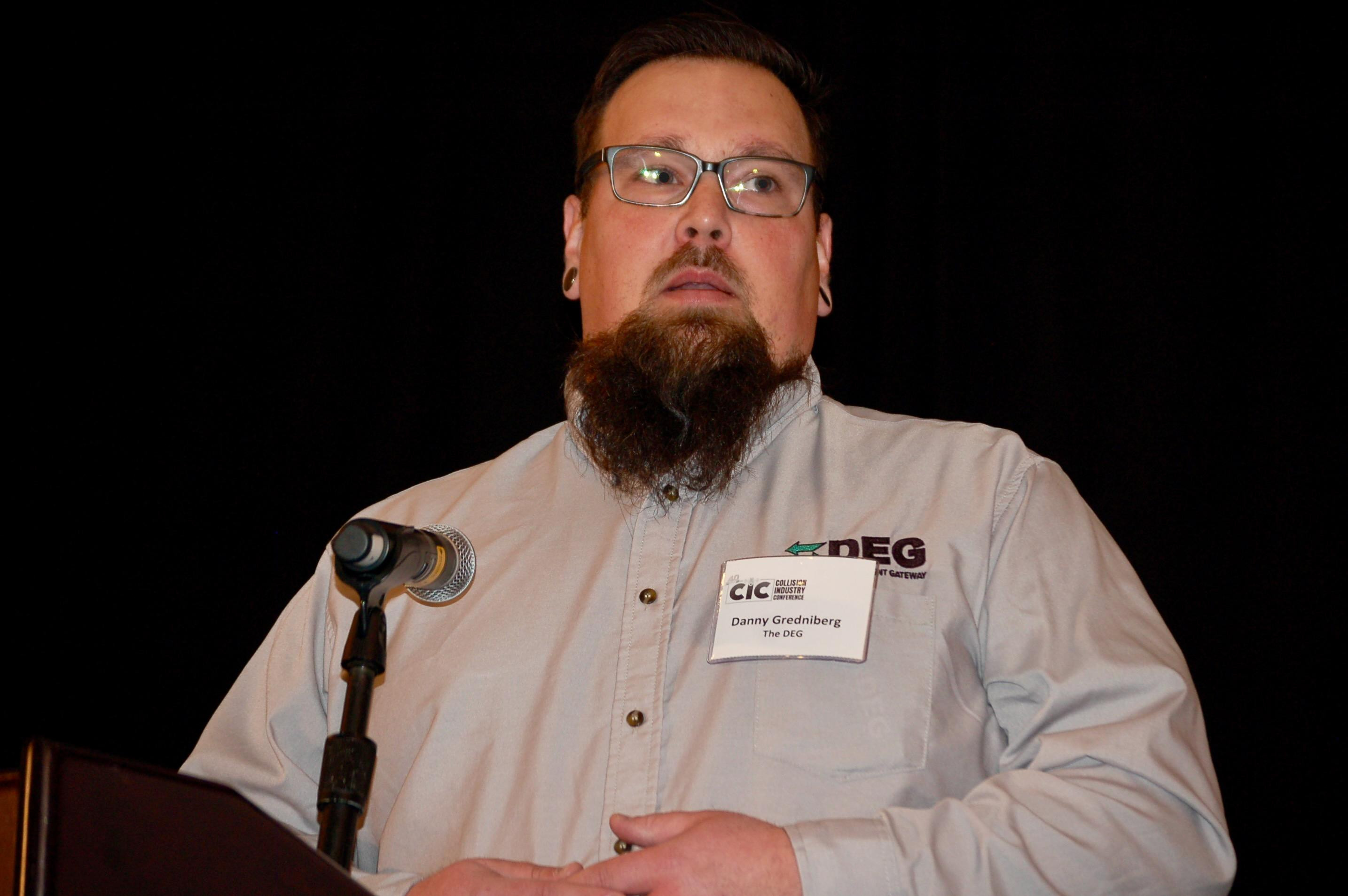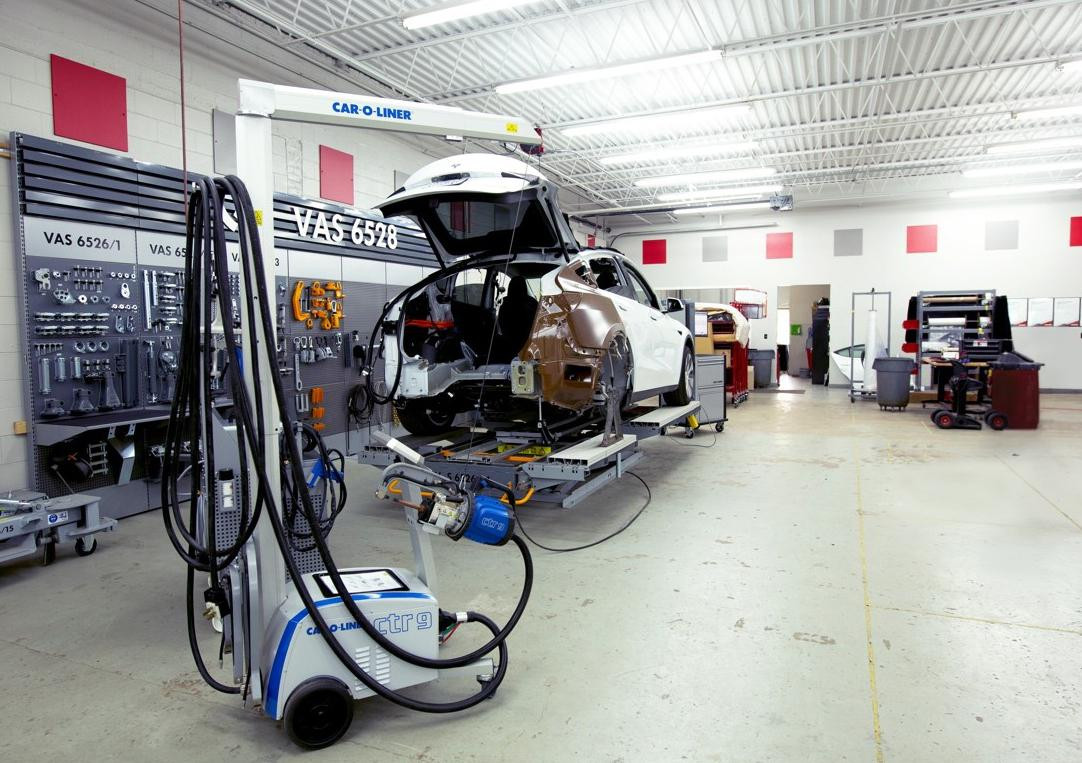After its 2022 study of blend refinish labor times, which led all three estimating systems to reexamine their 50% formulas and add more flexibility to their systems related to blending, the Society of Collision Repair Specialists (SCRS) said it will embark on a similar approach to the topic of structural set-up and measure.
“We often hear from our members, just as we did with blends, that the historic approach to set-up and measure doesn’t reflect what current requirements of modern-day vehicles and modern-day equipment require,” Aaron Schulenburg, executive director of SCRS, said at the association’s open board meeting this spring in Seattle. “We will perform a study that analyzes both of those tasks, and find a way to communicate back to the industry.
 Aaron Schulenburg, executive director of SCRS.
Aaron Schulenburg, executive director of SCRS.
“I think a big difference between the blending project, where we had historical values established similarly by all three estimating systems, is that with the task of setting up a vehicle and measuring a vehicle, those times aren’t defined by any of the estimating systems,” Schulenburg said. “So we’ll be looking at it a little differently in how we produce our results. But I think it will have equal value to the collision repair centers out there who can then take that information and proceed forward.”
Returning to the blend issue, Schulenburg said SCRS has developed a document focused on addressing common questions about the changes in the CCC Intelligent Solutions estimating system related to its blend formula. For each of a dozen questions, the document includes a link to information from CCC or Motor Information Systems -- which develops the database of labor times used in the CCC system -- addressing the question.
“I’ve heard some people have been challenged by someone saying, ‘Motor didn’t actually change anything,’ so we put that question in there,” Schulenburg said. “Did Motor Information Systems conduct research on the estimated work time development methodology for color blend adjacent panels? And there is a quote from Motor, saying throughout the first quarter of 2023, Motor reviewed information from multiple sources.”
Did Motor intend for the absence of a defined blend time to default to its prior formula? “Motor removed the previously published color blend formulas after determining they may not reflect the many variations encountered with modern vehicle finishes and designs,” the document quotes from Motor’s published response to a Database Enhancement Gateway (DEG) inquiry. “[Because of] these variations, Motor does not intend to publish a list of included or excluded items specific to color blend.”
How does Motor define a judgment time following an on-the-spot evaluation? “A judgment time would be the outcome reached when an estimator or appraiser considers the specifics of the vehicle and repair or refinish operation being evaluated to determine the estimated work time,” Motor wrote in a response to a DEG inquiry.
Paint Rep on Blend Issue
Speaking at the meeting, Jeff Wildman of BASF said the document could prove helpful given what he’s seen related to shops adjusting what they charge for blending.
“I’ve done a couple presentations on it, and a lot of the shops out there seem like they’re just looking for an ‘Easy’ button,” Wildman said. “The information you put together, Aaron, really helps explain it, and I think shops are starting to get it, but they’re afraid to ask for more than 50%. When we talk to shops and ask them what’s happening, what they’re doing, most shops just say, ‘Well, I’m just asking for 50%,’ but the shops that are trying to do more, that are leveraging the information, they’re getting paid for it. But you have to try.”
Wildman also said BASF in April had State Farm representatives in its training center, blending panels.
“They’d been asking about the blend study, and I told them, ‘I can’t tell you how long it takes. Come in and do it,’” Wildman said. “So we had three people from State Farm doing two-stage and three-stage blends, getting a feel for it to understand what’s really involved. They were there for a full day, eight hours spraying paint. So we’ll see what the outcome is, but people are looking into it.”
 Danny Gredinberg, administrator of DEG.
Danny Gredinberg, administrator of DEG.
Like Motor and CCC, Audatex also removed its blend formula and changed its guidance to say blend times vary and require a vehicle-by-vehicle evaluation. Mitchell allows a user to adjust the blend formula in its system but did not change its guidance related to the formula of 50% of full panel refinish time.
DEG Inquiries Making an Impact
Also during the SCRS meeting, Danny Gredinberg, the administrator of DEG, reported that better than half of the more than 500 inquiries submitted to DEG in the first quarter of the year resulted in a change to one of the estimating system databases by Audatex, CCC Intelligent Solutions or Mitchell. Those combined changes, he said, based on inquiries related to omissions or inaccurate information in the estimating systems, added 233 body labor hours, 70 refinish labor hours, and about $4,900 in parts pricing to the systems.
“Again, this is just in the first three months of this year,” Gredinberg said, adding that more than 22,000 such inquiries have been submitted since the DEG’s inception more than 15 years ago.
Gredinberg highlighted some of the recent inquiries. One (#36440) questioned CCC’s labor time to replace a quarter panel on a 2023 Nissan Rogue; after review, CCC increased the labor time from 18 hours to 23 hours. Just out of curiosity, Gredinberg said, he contacted Nissan and learned that the automaker had sold 549 of those quarter panels just in one year.
Another recent inquiry related to a Subaru Impreza quarter panel replacement caught Gredinberg’s eye, he said, because he’d submitted an inquiry on the same model of vehicle 11 years ago when working as an estimator. The time was increased back then, he said, and this year another five hours were added to the labor time in CCC. Subaru told him about 1,650 of the quarter panels have been sold since 2013.
Inquiries sometimes result in more than just changes to the estimating databases, Gredinberg said. One inquiry (#35949) noted the Mitchell estimating system lacked a labor time for the full replacement of the uniside on the 2024 Chevrolet Trax. Gredinberg found General Motors had no published procedure for that operation, but the automaker developed one within about 10 days of being contacted. That procedure was submitted to Mitchell, who used it to establish a labor time of 23.9 hours -- so the inquiry resulted in both an entry in the estimating database and a published OEM procedure.
“If you come across an error, an omission or inaccurate data, you can reach out to us through the website,” Gredinberg said, noting the DEG website also includes other tools like the P-pages or guides to the three major estimating systems, and many of the automakers’ electronic parts catalogs. “We’ve got to speak up. We’ve got to submit these inquiries. Because at the end of the day, we just want to get paid fairly for the work that we’re doing.”















John Yoswick